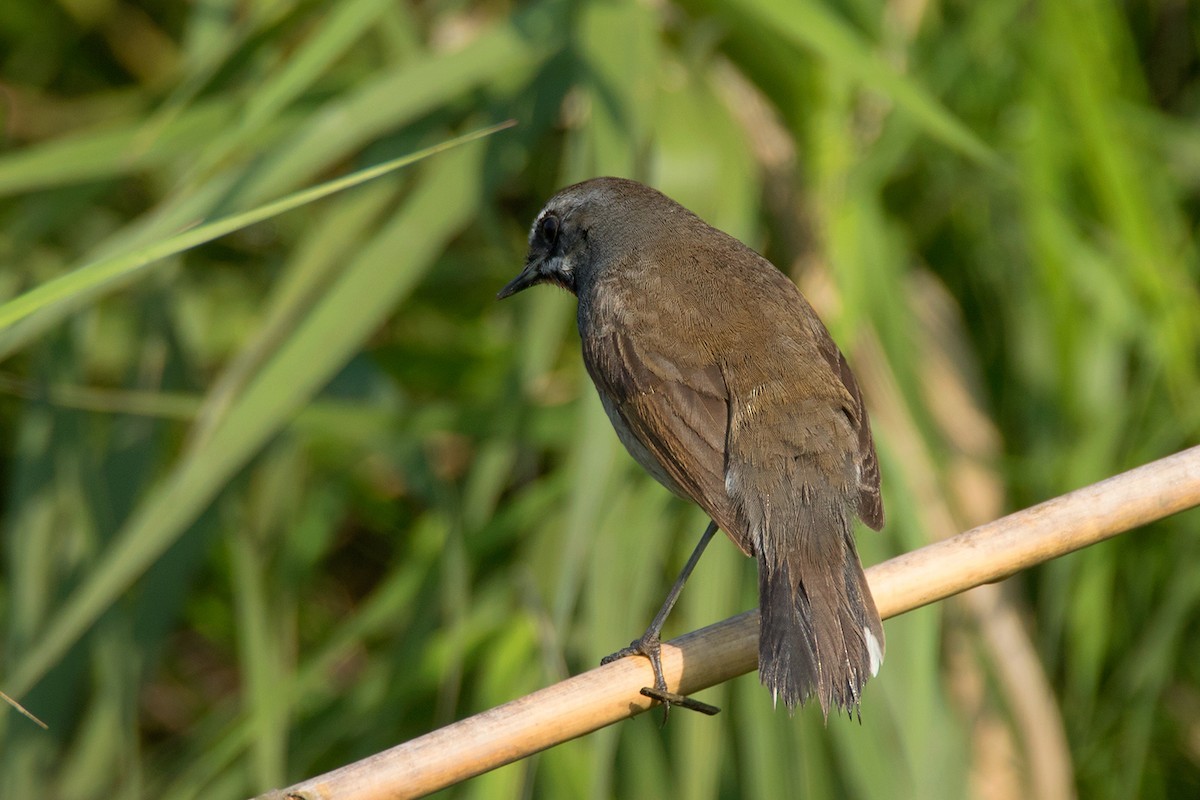Chinese Rubythroat
A species of Nightingales and Allies Scientific name : Calliope tschebaiewi Genus : Nightingales and Allies
Chinese Rubythroat, A species of Nightingales and Allies
Botanical name: Calliope tschebaiewi
Genus: Nightingales and Allies
Content
Description General Info
 Photo By Ayuwat Jearwattanakanok
Photo By Ayuwat Jearwattanakanok Description
The male is slaty brown above with a white forehead and supercilium. The wings are brownish and the tail is blackish with white base and tips. The sides of the throat and breast are black and the centre of the chin and throat is scarlet. Each of the black feathers on the breast is narrowly fringed with grey. The belly and vent are white. The female is dull, brownish grey above with a diffuse supercilium and smoky underparts. The centre of the throat is whitish as is the short moustachial stripe. 
Nest Placement
Ground
Dite type
Insectivorous
General Info
Feeding Habits
Bird food type
Behavior
Adults are shy although sometimes perching in the open. They are usually seen singly or in pairs during the breeding season. They feed mainly on small insects including beetles and ants. During the breeding season the male sings through the day from the top of an exposed perch. The song is a series of squeaky notes with a great deal of variation. Females produce an upward inflected whistle that follows a short and gruff note. The alarm call is a sharp yapping skyap. In the Tien Shan region, the Chinese rubythroat is found in thickets of juniper elfin at altitudes of 2500 to 2700 m on gently sloping land. The breeding season is in summer and nests are built in shrubs near dense stands of trees. The nest is placed in the middle of a shrub and sometimes on the ground in a dense tussock. The typical nest is a loose and large ball like with an entrance on the side but is sometimes cup like with an open top. The nest is built mainly by the female. A clutch of 4 to 6 eggs is laid. The eggs are greenish blue with rusty dots forming a ring near the broad end. Incubation is mostly by the female but the nestlings are fed by both parents. The eggs hatch after around 14 days and the young leave the nest when they fledge after about 16 days. The parents forage close to the nest and the young are mainly fed with hairy caterpillars. Rubythroats have been observed to abandon their nest when a cuckoo (Cuculus canorus) laid an egg in their nest. Martens and stoats sometimes destroy nests and prey on the young. 
Distribution Area
It is found in Central Asia and the Indian subcontinent, ranging across Bangladesh, Bhutan, India, Myanmar, Nepal, Pakistan, Russia, and Thailand. The move up north and into higher altitudes in summer and move into lower elevations to the south in winter. It breeds along the edge of the Tibetan plateau winters to its south from Nepal to Assam. Its natural habitat is open woodland and scrub. 

 Photo By Ayuwat Jearwattanakanok
Photo By Ayuwat Jearwattanakanok Scientific Classification
Phylum
Chordates Class
Birds Order
Perching birds Family
Old world flycatchers Genus
Nightingales and Allies Species
Chinese Rubythroat